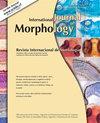智利军事人员身体组成、身体状况与作战能力的关系
IF 0.5
4区 医学
Q4 ANATOMY & MORPHOLOGY
引用次数: 0
摘要
本文章由计算机程序翻译,如有差异,请以英文原文为准。
Relación entre la Composición Corporal, Condición Física y Capacidad Operativa en Militares Chilenos
activities (simulated combat situation). The results showed a percentage of muscle tissue of 45.4 – 2.9 % (95%CI: 44.6 - 46.2), while the percentage of adipose tissue was 20.3 – 4.9 % (95%CI). : 14.7-17.3). Negative correlations of small magnitude were found between race time (5000 m) and muscle tissue (%) (r = -0.275) and positive with adipose tissue (%) (r = 0.294). However, high magnitude correlations were observed between pull-ups and muscle tissue (%) (r = 0.517) and adipose tissue (%) (r = -0.558). Adipose tissue was negatively related to aerobic capacity, upper body endurance strength and abdominal endurance strength, while muscle tissue was positively related to these same variables. No correlations were found between body composition and military operational capacity (p<0.05). It is concluded that body composition and physical condition are not related to military operational capacity in combat situations in infantry specialists, but body composition is related to strength and cardiorespiratory capacity.
求助全文
通过发布文献求助,成功后即可免费获取论文全文。
去求助
来源期刊

International Journal of Morphology
ANATOMY & MORPHOLOGY-
CiteScore
0.90
自引率
20.00%
发文量
110
审稿时长
3-8 weeks
期刊介绍:
The International Journal of Morphology (Revista Internacional de Morfología) (Print ISSN 0717-9367; Online ISSN 0717-9502) is an official publication of the Chilean Society of Anatomy, Argentine Association of Anatomy and Panamerican Association of Anatomy. It is the continuation of Revista Chilena de Anatomía (Chilean Anatomical Journal) and is published bimonthly. The six issues published yearly constitute one volume. This journal covers morphology in all its aspects, Gross Anatomy, Histology and Developmental Biology, as well as human and animals morphological aspects, including Celular, Molecular, systems or Evolutionary Biology. Reviews, short and brief communications and Letters to the Editor are also accepted.
 求助内容:
求助内容: 应助结果提醒方式:
应助结果提醒方式:


